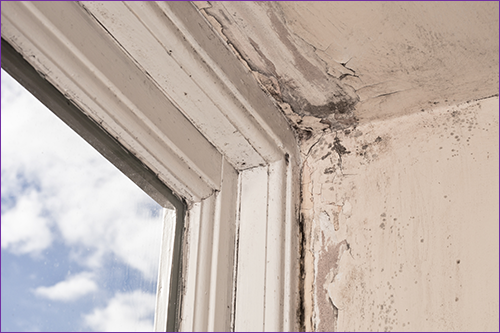Dry and wet rot treatment
Dry and wet rot treatment can sometimes be required to save the fabric of the wooden structures in a property. Dry and wet rot are two major causes of timber decay in old and modern buildings. They are caused by fungal decay and spread by millions of airborne spores.
Due to the devastating damage this defect can cause and the costs involved in eradicating it, home buyers are well advised to get a thorough inspection from a RICS surveyor to highlight any of its signs within their property.
Is dry rot flagged in your mortgage valuation?
The surveyor will look for signs During the mortgage lender's valuation survey. You may even find that your mortgage lender spots this defect, and as such, the mortgage lender won't agree to lend without an inspection from a dry and wet rot specialist. The report will state:
"There is evidence of dampness to ground floor walls, and timber in contact may be defective. You should instruct a damp and timber treatment contractor to investigate the full extent and do necessary work."
"Sub-floor ventilation is inadequate and may have allowed defects to occur. You should instruct a timber treatment contractor to investigate the full extent and do any necessary work."
If dry or wet rot is highlighted in your mortgage valuation, then most mortgage lenders require a specialist in Damp and Timber specialist to attend the property.
What is wet rot?
Wet rot occurs more frequently than dry rot but is less serious. It typically only causes decay where timber has become and remains wet.
Signs
- Distortion, discolouration, softness and cracking
- Loss of strength in the timber
- Visible fungal growth may be seen
- There may be a damp, musty smell
What is dry rot?
This is caused by serpula lacrymans and is the most serious form of fungal decay in a building. It can spread onto and destroy much of the timber.
Signs
- Distinct mushroom smell
- White fungal growth with yellow and lilac tinges
- Deep cracks appear within the wood
- Both soft and hardwoods can be damaged

How much can dry and wet rot cost to remedy?
You need to hire a damp and timber specialist surveyor and, depending on the dry and wet rot treatment needed, the cost can be anything from £200 to more than £3,000 and upwards, simply because you may have to replace structural timber completely.
The most expensive treatments are normally accompanied by an insurance-backed 30-year guarantee.
What does dry and wet rot treatment involve?
Dry Rot Treatment
- The moisture source maintaining the rot must be located and eliminated. This may involve repairing existing defects such as damaged or overflowing gutters, missing slates, blocked air bricks and so on.
- The specialist removes all damaged linings and decayed wood and panelling, skirtings, plaster and ceilings to ensure no further fungus spread.
- Visible and accessible fungal growth is eliminated.
- Remaining timber and brickwork is treated with fungicide to form protective chemical barriers.
- Preservative-treated timbers replace all removed beams.
Wet Rot Treatment
- The source of dampness or water is remedied so that timber moisture is kept to a safe level, below 20%.
- Weakened wood is removed.
- Remaining timber which might be at risk is treated with fungicide.
- Preservative-treated wood is used to replace all removed timber.
Caragh is an excellent writer in her own right as well as an accomplished copy editor for both fiction and non-fiction books, news articles and editorials. She has written extensively for SAM for a variety of conveyancing, survey and mortgage related articles.









